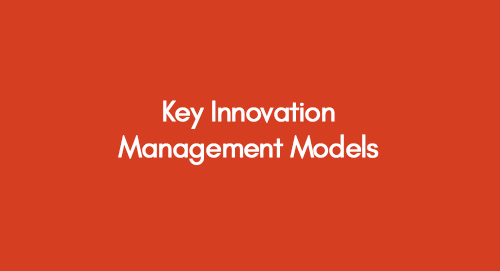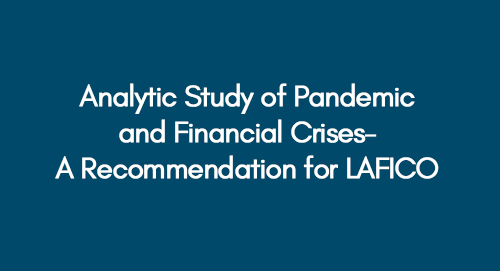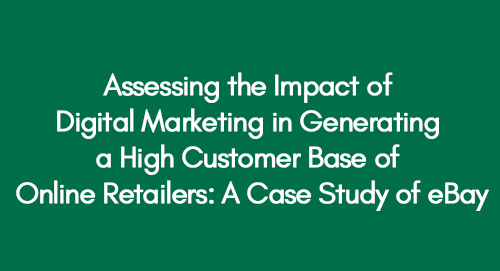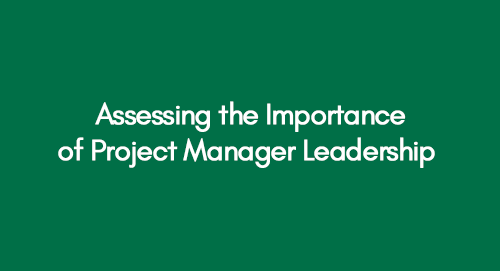
Key Innovation Management Models
June 2, 2022
Analytic Study of Pandemic and Financial Crises- A Recommendation for LAFICO
June 3, 2022LEGO, born from a Danish carpenter's vision, has grown into a global phenomenon cherished for its iconic bricks. Its strategic journey, built on innovation, quality, and community engagement, underpins its enduring success. Since its inception, LEGO has evolved from wooden toys to the groundbreaking interlocking brick design of 1958, offering endless creative possibilities. From classic sets to licensed collaborations like Star Wars and Harry Potter, LEGO continues to inspire imagination in children and adults worldwide.
At the heart of LEGO's strategy lies a commitment to innovation, loyalty, and sustainability. By leveraging technology, nurturing a dedicated fan base, expanding globally, and championing environmental responsibility, LEGO remains at the forefront of the toy industry. Its dedication to fostering creativity ensures that the LEGO experience transcends generations, embodying the timeless joy of play and exploration.
You can choose any research topic from the given list, just contact us at WhatsApp or email.
To comprehensively analyze LEGO's strategic landscape, it's essential to grasp its history, market positioning, and competitive environment.
Introduction
Founded 87 years ago in 1932 by Ole Kirk Christiansen, LEGO is a Danish company headquartered in Billund, Denmark (Lego, 2020; Forbes, 2019). The name "LEGO" stems from the Danish phrase "LEg GOdt," meaning "play well." Specializing in the production of interlocking toy bricks, LEGO soared to become the world's largest toy company by revenue in the first half of 2015 (Wang, 2017). With 42 offices globally as of 2017 (Wang, 2017), the company boasted a revenue of 36.4 billion and a net income of 8.1 billion in 2018, with a workforce of 17,534 employees as of 2019 (Forbes, 2019). The LEGO Group has also established parks worldwide, including Legoland, and operates discovery centres alongside the philanthropic LEGO Foundation (Lego, 2020).
Understanding the industry dynamics and market context is crucial before applying Porter's Five Forces Model to LEGO.
Porter's Five Forces Model
Porter's five forces is an essential step in the strategic analysis of LEGO company as it highlights the competitive rivals a company bears in the meantime.
The Threat of New Entrants
The threat of new entrants into the market for LEGO is influenced by various external macro factors, including socio-cultural, economic, and technological elements. Retail giants like Walmart, Target, and Toy "R" Us have introduced innovative and technologically advanced toys, posing a considerable threat to LEGO's market position. Past instances, as highlighted by Logue (2014), have demonstrated how these factors have impacted LEGO's economic standing, amplifying the threat of new entrants. Furthermore, the prevalence of piracy remains a significant concern, with unauthorized replicas of LEGO products being sold at lower costs by smaller firms, as noted by Constantinou (2018). Additionally, the rapid pace of innovation and evolving trends within the media industry further contribute to LEGO's challenges in maintaining its market share and relevance.
The impact of home entertainment has been substantial for the company, influencing its marketing strategies, distribution costs, licensing fees, and legal expenditures. These shifts, compounded by the production of repetitive products, have led to changes in consumer preferences, resulting in a loss of market share and a decline in sales in 2017 (Scribner, 2018). To combat these challenges and maintain a competitive edge, the company has pursued an innovative approach. Innovation, as highlighted by Prakash, Dingus, and Siddiq (2017), stands as the primary driver of environmental changes within the company. However, innovation is not static; rather, it represents a dynamic factor amidst other challenges such as the proliferation of low-cost and high-tech products that pose threats to the organization's sustainability.
Bargaining Power of Suppliers
The Chinese subcontractors are LEGO's primary suppliers and supply to other industries, which lowers their dependence on LEGO (Mellone et al., 2018). Moreover, Bayer AG is another supplier of LEGO that provides LEGO with plastic. Meanwhile, ABS is also considered the primary ingredient for LEGO (Constantinou, L., 2018). Therefore, the suppliers drive the changes in prices in the company as the prices of raw materials and oil prices can impact LEGO's profitability, which are economic factors of the company. Therefore, it can be deduced that supplier bargaining power is high and can threaten LEGO as suppliers can change their focus from LEGO to its rivals at any time (Mellone et al., 2018). LEGO maintains the change in prices demanded by suppliers to retain the suppliers' product quality and budget (Logue, 2014). LEGO is in a state of flux as the demand for suppliers keeps changing from time to time.
Bargaining Power of Buyers
The repetitive production of the same type of bricks impacted buyers' bargaining power, which affected LEGO's economic factor to a greater extent (BBC News, 2018). Moreover, LEGO uses different retailers as its significant distributors for its products, making them the primary buyers. Retailers have changed the prices and delivery times which influenced the company in the past (Logue, 2014). Therefore, buyers' bargaining power has impacted the company's profitability (Mellone et al., 2018). The company has changed its pricing policies to maintain reasonable prices and retain customers to minimise this threat.
Moreover, the company has changed its promotional strategies to restrict its customers from buying from its rivals. The company decides prices with each region according to statistics, currency exchange rates, and transportation costs. Taxes and local laws being the legal forces, also impact the prices for each region set by the company. The company does not influence these services, and hence the prices keep changing (Lego, 2020)
Threat of Substitutes
The socio-cultural and technological factors also impact the substitution factor as kids now have started using digital gadgets more, which has affected the company's sales (Constantinou, 2018). The company has started using technology and is producing technologically advanced products, which are the causes of driving technological change in the company (Prakash, Dingus, and Siddiq, 2017). However, the threat of substitutes always exists as standard technology to manufacture quality products will keep changing. Moreover, substitutes can be in the form of sports and extracurricular activities. Therefore, it can be asserted that threats of substitutes can stay moderate and not incline too high if the organization's approach is also inclined towards continuous development and technology.
Rivalry among Existing Competitors
As the strategic analysis of LEGO follows, it is also essential to highlight the pre-existing competitors. The major competitors for LEGO are Mattel, Bandai NAMCO, Hasbro, and Takara Tomy, which can impact the economic factor of LEGO due to low switching costs and producing more choices for consumers to select from a wide range of products (Constantinou, 2018). Moreover, Sony and Nintendo are digital competitors for the company. These factors became the causes and drove changes in LEGO, resulting in a low threat of competitors for LEGO as the company established a loyal consumer base and changed its pricing policy (Mellone et al., 2018). Moreover, the company has identified its value generation through competition (Constantinou, 2018). After analyzing Porter’s five forces, the lack of innovation is the most critical factor that has impacted the core activities of LEGO in the past.
Therefore, it can also be identified as a critical issue for the company that may intensively drop sales due to a lack of innovation and production of repetitive products. As a result of the lack of innovation, the company had to fire 8% of employees and shed 1400 jobs after facing a drop in revenue in 2017, i.e. for the first time in 13 years. The revenue fell by 5% in the first half of 2017—the revenue years (US $2.4 billion) DKK 37.9 billion from 2007 to 2016. The signs have been emerging since 2015 as the revenue slowed from 25% in the same year to 6% in 2016 (Knowledge@Wharton, 2017). This innovation factor requires greater attention from LEGO over other issues as it has impacted the sales and profitability of the company in the past and can impact it in the coming years.
Evaluation of LEGO’s Ability to Sustain Advantage
LEGO stands as a globally recognized brand that has cultivated its reputation over the years, achieving universal acclaim (Andersen and Ross, 2016). However, challenges such as product overproduction and workforce downsizing have hindered LEGO's ability to establish a dominant position in the toy market (El Sawy et al., 2016). To gain a competitive edge, LEGO can focus on creating innovative and intricate products that resonate with contemporary children's preferences. Moreover, by implementing cost-saving restructuring measures, LEGO maintains a diverse range of brick colours and shapes, catering to consumer demands. Additionally, the company utilizes specialized machinery for the production of specific LEGO bricks, further enhancing its product offerings and manufacturing capabilities.
This enables the organization to decrease the cost and time required and increase the overall capacity of production (Wang, 2017). Therefore, using good quality raw materials and specialized equipment would enable LEGO to provide a variety of needs and demands of the consumers. By analyzing LEGO's significant resources, history, and brand prestige, it can be identified that the company is ahead of its competitors (Ringen, 2015). Therefore, being a professional organization in the toy industry and having an established position as a sustainable corporation has allowed LEGO to gain an advantage by acquiring consumers and a broad customer base Roos and Victor, 2018). Therefore, strategic analysis of LEGO may play a substantial role to sustain its advantage, the study applied the framework of value chain analysis and VRIO analysis.
Contextualizing the operational framework of LEGO precedes the examination of Porter's Value Chain to discern its strategic advantages and operational efficiencies.
Porter's Value Chain
The study applied the use of Porter's value chain as another tool for strategic analysis of LEGO because it identifies the internal activities in which the firm is engaged during the transformation of inputs into outputs. According to the study by Zamora (2016), the value chain analysis is a process in which an organization is encouraged to recognize and classify its support and primary activities, which provide value to the final product. Similarly, as per the study of Narvadez, Sarahadi, and Sobrevega (2017), the value chain analysis analyses the primary activities for reducing cost or escalating differentiation. Furthermore, the study by Purcell et al. (2017) also states that value chain analysis is an effective strategic tool that can be used to identify and analyze the internal activities of the organization. Therefore, the study applied value chain analysis to identify LEGO's most valuable and improved activities to gain a competitive advantage. Furthermore, the value chain analysis effectively analyses the organisation's competitive advantages and disadvantages. Similarly, Rosales et al. (2017) study highlights that organizations competing with differentiation and cost advantage are more likely to perform their activities better than their competitors.
Primary Activities
Primary activities are the core functions within a value chain that directly contribute to the creation, delivery, and support of a product or service. These include inbound logistics, operations, outbound logistics, marketing and sales, and service.
Inbound Logistics
The inbound logistics of LEGO are not expected to suffer from any blockage which might obstruct their production process. Furthermore, the raw materials of LEGO are also supplied by Bayer AG, a German chemical company that provides quality materials to the organization. Again, future raw materials can also be influenced because LEGO plans to use environmentally friendly products to ensure environmental sustainability (Elsted Hansen, 2016).
Operations
LEGO was having trouble meeting the demands of its production capabilities, causing difficulties in its operations. Therefore, to ensure smooth operations, LEGO ensured to use of the analytical approach from advanced IT and software packages. Furthermore, the company also adheres to the European Union's legislation, which ensures LEGO's credibility in maintaining its market position. Safety and quality standards are also a core focus in the operations of LEGO (Botoric, 2015).
Outbound Logistics
The outbound logistics of LEGO use the large hub centres, which are situated closer to the retailers that appropriately control inventory and create lesser shortages of stock. The retailers who placed their orders earlier are also provided with discounts from LEGO. Furthermore, LEGO works closely with its retailers to manage inventory (Cerezo-Narváez et al., 2019).
Marketing and Sales
The marketing sales of LEGO were negatively affected because of the innovation issues. However, the strategic partnership of LEGO with Warner Bros and Lucas Films provided assistance and key marketing to LEGO during the sales crisis. LEGO also uses the pricing strategy of selling the best goods at higher prices. However, the competitors of LEGO offer products at a much cheaper price (Elsted Hansen, 2016).
Service
LEGO provides various services to individuals and children across the globe by offering local community engagement in which the employees of LEGO volunteer to support needy children. LEGO also hosts initiatives such as Building the Change and RE: code for children for an interactive learning experience. LEGO has partnered with UNICEF to empower children through creativity and learning (Lego, 2020).
Secondary Activities
Secondary activities encompass supportive functions within a value chain that facilitate the efficiency and effectiveness of primary activities. These include procurement, technology development, human resource management, and infrastructure.
Firm Infrastructure
Investigation of even the slightest activities is an essential part of the strategic analysis of LEGO. Due to the organisation's lower levels of innovation, LEGO's infrastructure was damaged. The organization reduced 10% of its employees because of decreased sales and the production of fewer innovative products. However, the effective management of the infrastructure activities allowed LEGO to regain competitive positioning in the market (Dobrynskaya and Kishilova, 2018).
Human Resource Management
Effective human resource management allowed LEGO to improve its workforce's motivation, skills, and commitment levels. The human resource department of LEGO was affected the most due to the issue in the company because the organization is dependent on the talent of its workforce (Dobrynskaya and Kishilova, 2018).
Technology Development
The LEGO crisis caused the organisation's development and improvement of technology. LEGO utilizes effective technology for its research and development to initiate innovation (Dobrynskaya and Kishilova, 2018).
Procurement
The procurement process of LEGO remained unaffected because of its partnership with different suppliers of raw materials, which optimized the inbound and outbound activities of the firm (Dobrynskaya and Kishilova, 2018).
Assessing LEGO's internal resources and capabilities is essential before diving into the VRIO analysis to discern its competitive advantages and potential leverage points.
VRIO Analysis of LEGO
The VRIO analysis serves as a valuable strategic tool for LEGO, aiding firms in making informed business decisions and planning effectively. Knott (2015) emphasizes its significance in uncovering insights into the organization's competitive advantage, while Song and Sung (2015) highlight its efficacy in internal resource assessment. The VRIO analysis, as identified in various studies, including Knott's and Song and Sung's, proves instrumental in evaluating LEGO's competitive advantage.
By analyzing the table above, it is considered that the financial resources of LEGO are valuable and rare, which provides a competitive advantage to the organization. Furthermore, LEGO also has a sufficient number of world-class facilities near the retailers, which provide cheap production and value for the organization. However, the modern facilities of LEGO are not difficult to imitate and reduce the chances of competitive advantage. Furthermore, the trademark of LEGO serves as a valuable resource to the organization and is costly to imitate, which provides LEGO with a competitive advantage in the market.
This strategic analysis of LEGO may eventually help in effectively managing the resources of the company and, providing a distinct competitive advantage. The human resources, such as employees and management of LEGO, are the organisation's most important assets and are valuable for LEGO. The innovation and creativity in LEGO have faced challenges in the past. Therefore, LEGO has taken the necessary steps to improve its process of creativity. Furthermore, the brand image of LEGO has a world-class reputation which is costly to imitate and provides LEGO with a distinct competitive advantage.

Conclusion
This study is based on the strategic analysis of LEGO and identifies the problem which caused a decline in the sales of LEGO products. Therefore, the study conducts Porter’s five investigations which identified the key problem which caused a crisis in the sales of LEGO. Furthermore, Porter’s Five also analyzed the factors of PESTEL for the classification of problems that caused a downfall in the sales of LEGO. Moreover, Porter’s Five Analysis also identifies the issues that impact the organization’s strategy most. Similarly, the study evaluates LEGO’s ability to sustain advantage using the value chain and VRIO analysis.
Therefore, this section categorizes the crisis's effects on LEGO's activities. Similarly, the study also applies the SWOT/TOWS to identify LEGO's different strategies, strengths, weaknesses, opportunities, and threats. The LEGO Company adopted an effective pricing policy strategy, maintained its budget, and improved the quality of its products to deal with the lack of innovation in the company. Moreover, the company improved its operations, logistics (inbound and outbound), marketing, and services to increase its sales and profitability, which were majorly impacted due to a lack of innovation and sustaining competitive advantage. Furthermore, the LEGO Company has the financial, physical, technological, organizational, human, innovation and reputation resources to maintain and gain more competitive advantage in the competitive marketing environment.
If the management of LEGO wants to implement change and innovation effectively, it requires pure intentions along with a solid and relative level of detail about its competitors. Planned strategies should be implemented, and responses to unexpected issues and challenges should be effectively handled. Strategies for identifying strategic issues should be looked upon in a variety of manners to get detailed insights into the strategic issues. The detailed analysis will provide a clear view of strategic issues in various ways, providing solutions to adopt the higher innovative strategies. Moreover, it can improve the company's overall mission, vision, scope, purpose, and value and compete successfully in the market.
Review the following:
Get 3+ Free LEGO Dissertation Topics within 24 hours?
References
Andersen, P. and Ross, J.W., 2016. Transforming the LEGO group for the digital economy.
BBC News. 2018. Lego Admits It Made Too Many Bricks. [online] Available at: <https://www.bbc.com/news/business-43298897> [Accessed 16 March 2020].
Bolton, R.N. and Shankar, V., 2018. Emerging retailer pricing trends and practices. In Handbook of research on retailing. Edward Elgar Publishing.
Botoric, V., 2015. When ideas generate value: How LEGO profitably democratized its relationship with fans. In Creativity in the digital age (pp. 159-170). Springer, London.
Cerezo-Narváez, A., Córdoba-Roldán, A., Pastor-Fernández, A., Aguayo-González, F., Otero-Mateo, M. and Ballesteros-Pérez, P., 2019. Training Competencies in Industrial Risk Prevention with Lego® Serious Play®: A Case Study. Safety, 5(4), p.81.
Constantinou, L., 2018. LEGO Turnaround.
Dobrynskaya, V. and Kishilova, J., 2018. LEGO-The Toy of Smart Investors. Available at SSRN 3291456.
El Sawy, O.A., Kræmmergaard, P., Amsinck, H. and Vinther, A.L., 2016. How LEGO built the foundations and enterprise capabilities for digital leadership. MIS Quarterly Executive, 15(2).
El-Sayed, A.F.M., Dickson, M.W. and El-Naggar, G.O., 2015. Value chain analysis of the aquaculture feed sector in Egypt. Aquaculture, 437, pp.92-101.
Elsted Hansen, P., 2016. Valuation of Lego.
Forbes, 2019. Lego Group. [online] Available at: <https://www.forbes.com/companies/lego-group/#5479ebfb53d3> [Accessed 16 March 2020].
Handley, L., 2018. How Marketing Built Lego Into The World’s Favorite Toy Brand. [online] CNBC. Available at: <https://www.cnbc.com/2018/04/27/lego-marketing-strategy-made-it-world-favorite-toy-brand.html> [Accessed 17 March 2020].
Karmark, E., 2010. Challenges in the mediatization of a corporate brand: identity-effects as LEGO establishes a media products company. In Media, organizations and identity (pp. 112-128). Palgrave Macmillan, London.
Knott, P.J., 2015. Does VRIO help managers evaluate a firm’s resources? Management Decision.
Knowledge@Wharton., 2017. How Lego Can Rebuild Its Business - Knowledge@Wharton. [online] Available at: <https://knowledge.wharton.upenn.edu/article/lego-can-recover-slump/> [Accessed 16 March 2020].
Lego., 2020. Help 2 - Help 2 - Help 2 - Help Topics - Service LEGO.Com. [online] Available at: <https://www.lego.com/en-us/service/help/products/themes-sets/how-we-decide-the-prices-of-lego-sets-408100000008322> [Accessed 16 March 2020].
Lego., 2020. LEGO Group- About Us- LEGO.Com MY. [online] Available at: <https://www.lego.com/en-my/aboutus/lego-group/> [Accessed 16 March 2020].
Logue, C., 2014. For the individual assignment, you had to do a case analysis report on LEGO. This is my fi... View more Uploaded by.
Mellone, L., Sahramaa, M.M., Olsen, T.D. and Jackson, D.M., Open innovation in LEGO: a case study.
Mintz, J., 2014. Why The TOWS Matrix Is Important To Public Sector Marketers. [online] Available at: <http://www.jimmintz.ca/2014/09/25/why-the-tows-matrix-is-important-to-public-sector-marketers/> [Accessed 16 March 2020].
Prakash, A., Dingus, D.A. and Siddiq, M.S.B., 2017. LEGO: LEADING INNOVATION STRATEGICALLY. History & Technology, 24(3), pp.221-237.
Purcell, S.W., Crona, B.I., Lalavanua, W. and Eriksson, H., 2017. Distribution of economic returns in small-scale fisheries for international markets: a value-chain analysis. Marine Policy, 86, pp.9-16.
Ringen, J., 2015. How Lego Became the Apple of Toys. Fast Company, 192.
Roos, J. and Victor, B., 2018. How It All Began: The Origins Of LEGO® Serious Play®. International Journal of Management and Applied Research, 5(4), pp.326-343.
Rosales, R.M., Pomeroy, R., Calabio, I.J., Batong, M., Cedo, K., Escara, N., Facunla, V., Gulayan, A., Narvadez, M., Sarahadil, M. and Sobrevega, M.A., 2017. Value chain analysis and small-scale fisheries management. Marine Policy, 83, pp.11-21.
Scribner, H., 2018. Lego Company Announces Its Big Problem — There Are Too Many Legos Out There. [online] Deseret News. Available at: <https://www.deseret.com/2018/3/6/20641146/lego-company-announces-its-big-problem-there-are-too-many-legos-out-there> [Accessed 16 March 2020].
Song, J.J. and Sung, H., 2015. A study on the relation between strategic attributes of technological resources and competitive advantage: Empirical analysis of VRIO framework by using technology evaluation results of technology-based SMEs. Journal of Korea Technology Innovation Society, 18(3), pp.416-443.
Tuomi, A., Tussyadiah, I. and Stienmetz, J., 2019. Leveraging LEGO® Serious Play® to embrace AI and robots in tourism. Annals of Tourism Research.
Visual-paradigm., 2020. What Is Five Forces Analysis? [online] Available at: <https://www.visual-paradigm.com/guide/strategic-analysis/what-is-five-forces-analysis/> [Accessed 17 March 2020].
Wang, N., 2017. Financial Analysis of Lego Company.
Xinhua., 2019. LEGO Set For China Expansion Over Solid Growth Outlook - Xinhua | English.News. Cn. [online] Available at: <http://www.xinhuanet.com/english/2019-02/27/c_137854707.htm> [Accessed 17 March 2020].
Zamora, E.A., 2016. Value chain analysis: A brief review. Asian Journal of Innovation and Policy, 5(2), pp.116-128.


















 Download PDF File
Download PDF File

















